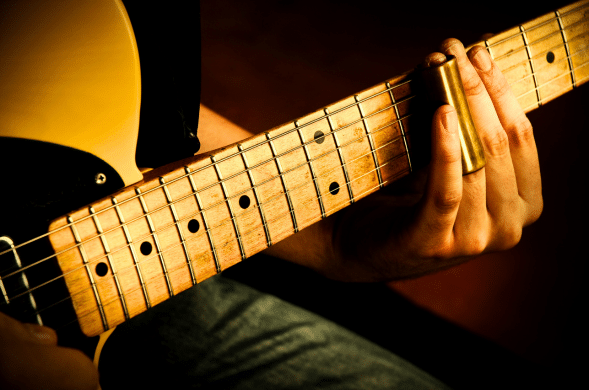Finding the best guitar slides for beginners is crucial for a smooth and enjoyable learning experience. Whether you’re looking to emulate the sounds of legendary slide guitarists or forge your own path, this article is an invaluable resource that will empower you with the knowledge and tools needed to start your slide guitar journey on the right note!
Your guitar slide education starts here. Read on to learn more!
To go directly to my top recommended slides for beginners, click here.
The Short Answer
The best guitar slides for beginners can make the transition into slide guitar playing as smooth and enjoyable as possible. It’s important to consider different glass, metal, and brass materials. Each option offers its own unique tonal qualities and playability. Selecting a slide that fits comfortably on your finger for optimal control is essential. Experimenting with different slides and practicing regularly will help you find your sound and improve your slide guitar skills.
Key Takeaways

Here are the essential points to remember about choosing a guitar slide.
- Choosing the Right Material: The material of the guitar slide, whether glass, metal, or ceramic, significantly influences the sound and playability, affecting the overall slide guitar experience.
- Slide Fit is Crucial: Ensuring the slide fits comfortably and securely on your finger is essential for control and ease of play, directly impacting your ability to learn and perform slide guitar techniques.
- Experimentation with Slides: Trying out different types of slides, including various materials and sizes, can help beginners find the most suitable option for their playing style and comfort level.
- Understanding Slide Placement: Learning which finger to wear the slide on and how to properly position it can greatly affect your ability to produce clear, melodious slide guitar sounds.
- Practice and Patience: Mastering slide guitar, like any musical skill, requires regular practice, patience, and time to develop proficiency and comfort with the technique.
Keep On Reading (Below) To Learn More
The Unique Sound of Slide Guitar
I remember when I first encountered the sound of a slide guitar. It had this human-like voice, weeping and singing through the amplifier, creating music that seemed to transcend the ordinary strumming or plucking of strings.
This is the allure that draws many to learn slide guitar. It’s a technique that allows a player to glide over the strings with a smooth object called a “slide,” which creates continuous transitions between notes, producing a unique legato melody that regular fretting can’t replicate.
How Does a Slide Work?
You might be wondering exactly how a slide achieves its sound. It’s quite simple – pressing a slide against the strings and moving it up and down the fretboard allows you to vary the pitch without lifting your finger. Think of it as a violin bow for a guitar, but instead of bowing, you’re sliding.
Beginning Your Slide Guitar Journey
Starting on slide guitar is thrilling, yet it comes with its set of hurdles. For beginners, even picking the correct slide can feel daunting. As I quickly learned, the right slide can make a significant difference in playing comfort and the sounds you can produce. With a bit of guidance, you’ll soon find that mastering the basics of slide guitar is an incredibly rewarding journey.
Which Finger Should Be Used for the Slide?
For beginners, one of the first questions that pops up is as crucial as it is intriguing: “Which finger should I adorn with this magical tool?” Fear not, for the answer lies within the realms of personal comfort, style, and the type of music you wish to conjure.
Traditionally, guitar slides have found their home on various fingers, each offering its own blend of advantages and challenges. Let’s dive into the most common choices to help you find your slide-wielding sweet spot.
The Pinky Finger
The favorite among many, especially those who wish to not abandon the traditional fretting techniques while weaving slide magic. Wearing the slide on your pinky allows you the freedom to grip chords and pluck strings with the rest of your fingers, making it a versatile choice. It’s like having your cake and eating it too, but with strings attached—literally!
The Ring Finger
A close second in the popularity contest, the ring finger provides a good balance between control and freedom. It offers a bit more stability for the slide, making it easier to maintain even pressure across the strings. Think of it as the middle ground, where the worlds of slide and conventional playing harmoniously meet.
The Middle Finger
For those who dare to tread slightly off the beaten path, the middle finger offers an interesting compromise. It provides a strong grip on the slide, allowing for more aggressive playing styles. Perfect for the slide guitarist who wants to make a statement, it’s like turning up the volume knob on your expression.
The Index Finger
The road less traveled, but by no means a dead end. Using the index finger for the slide can feel a bit awkward at first, but it offers unparalleled dexterity for intricate slide work. Ideal for the experimentalist looking to push the boundaries of slide guitar.
Remember, there’s no one-size-fits-all answer here. The quest for the perfect finger for your guitar slide is as personal as your musical voice. Experiment with different fingers and slides to discover what resonates with you. It’s all about finding that perfect fit that feels like a natural extension of your musical soul.
So, pick a finger, strap on that slide, and let the strings sing your story. After all, every great journey begins with a start!
Finding the Perfect Fit: Tips for Beginners on Choosing a Guitar Slide
Starting with the Right Slide
Discovering the right guitar slide requires a mix of understanding fit, personal comfort, and material. Your choice can significantly influence your ability to control the slide and execute techniques with ease. It is important to find a slide that fits your finger comfortably without being too tight or bulky.
The Value of Medium Slides
Starting with a medium glass slide is a solid first step. It gives you a balance of warmth and brightness, allowing you to experiment without overwhelming you as a beginner. A medium thickness offers enough mass for tone production, while also being light enough to foster agility.
Experimentation is Key
Experimentation is key. Don’t shy away from trying out different slides at your local music store. Pay attention to how each one feels on your strings and how they resonate with every note you play. It’s through this personal exploration that you can develop a sense of what works best for your style.
Guitar Slide Comfort
Lastly, remember that comfort with a guitar slide does not emerge overnight. It is a skill honed over time with practice and dedication. Be patient with yourself, and celebrate the small victories on your path to becoming a proficient slide guitarist.
Selecting Your First Guitar Slide: Material Matters

When you’re a beginner, choosing the right guitar slide is crucial for comfort and getting the hang of the technique. Different materials affect the sound and playability, and understanding these nuances helps in making an informed decision.
Glass Slides for Beginners
Glass slides are a popular choice among beginner players due to their smooth texture and mellow sound. The warmth they bring to your playing is especially noticeable on the lower, wound strings, where they produce a softer, more rounded tone.
The Appeal of Metal Slides
In contrast, metal slides, known for their durability, give off a brighter sound. This can be quite appealing if you’re into blues or rock, genres where a sharp, cutting tone is often desired. However, be mindful that metal can sound quite raspy, particularly on the thicker strings, which might be a bit much when you’re just starting out.
Considering Brass Slides
Brass is another option to consider. A thick brass slide provides a robust, smooth sound but can be heavy, which might slow you down as you learn to navigate the fretboard. It’s about finding the right balance between the ease of play and the sound you want to produce.
Ultimately, the material you choose for your guitar slide significantly shapes the music you create. It’s a personal choice that defines your sound as a guitarist.
Comparison of Guitar Slide Materials
Here’s a quick reference table to help you decide which slide might be best for your needs. Just so you know, these are generalities, and each player may have a different experience with various guitar slide types.
| Material | Sound Quality | Durability | Ease of Use | Best For Music Style |
|---|---|---|---|---|
| Glass | Warm, Smooth | Medium | Easy | Blues, Folk |
| Metal | Bright, Sharp | High | Moderate | Rock, Country |
| Ceramic | Rich, Mellow | High | Moderate | Jazz, Blues |
| Brass | Warm, Mellow | High | Moderate | Blues, Rock |
| Steel | Bright, Crisp | Very High | Challenging | Heavy Metal, Rock |
Setting the Stage: Proper String Height for the Guitar Slide
Although you’re probably reading this to find the best guitar slide for you, I thought it was important to point out that string height is just as important when it comes to your slide’s performance!
Navigating the world of guitar slides isn’t just about choosing the right finger or slide material; it’s also about setting the stage for your slide to dance upon—the strings. The height of your guitar strings, or the action, plays a pivotal role in your slide guitar escapades.
Too low, and you’ll be met with an orchestra of unwanted buzzes and rattles. Too high, and your fingers might wage a silent protest from the effort required to fret notes. Let’s find that sweet spot where your slide can glide with grace and precision.
The Highs and Lows of Action
In the realm of slide guitar, action is more than just a genre of film—it’s the foundation of your sound. A slightly higher action than what you’d use for regular playing is often preferred. This elevation gives your slide enough clearance to sing without bumping into the frets, ensuring a smooth, resonant tone. Imagine your slide as a hovercraft gliding over the strings, barely touching yet fully in control.
Finding Your Ideal Height
There’s no ‘one height fits all’ here. The perfect action for your slide guitar play depends on your instrument, your slide, and, most importantly, your personal touch. A good starting point is to raise the action just enough to eliminate any buzzing when the slide makes contact with the strings, yet not so high that playing becomes a Herculean task.
Adjusting For Comfort and Sound
If you’re handy with a hex wrench and feel adventurous, adjusting the action on your guitar can be a DIY project. For most guitars, tweaking the bridge saddles might do the trick. For others, it might involve adjusting the truss rod or getting a higher nut installed. If these terms sound like a foreign language, a visit to a trusted guitar technician might be your best bet. Think of it as a spa day for your guitar, where it comes out ready to slide into the spotlight!
Balance Is Key
Striking the perfect balance between string height and playability is crucial. You want the strings high enough for the slide to resonate clearly without striking the frets, yet low enough to allow for traditional playing if you wish to mix techniques. It’s like adjusting the saddle on a bike; the right height makes the ride both comfortable and efficient.
In the grand theater of slide guitar, setting the proper string height is like tuning the stage lights—essential for a stellar performance. With the strings set just right, your slide can truly sing, turning every note into a poetic expression of your musical journey. So, take the time to find your ideal action, and let your slide guitar story unfold on a stage set for success!
Top Recommended Slides for New Players
Choosing the right guitar slide is crucial for beginners venturing into the world of slide guitar. The slide you select can significantly influence both your learning curve and the sound you produce. I’ve compiled a selection of five guitar slides that are especially well-suited for beginners.
The Ernie Ball Glass Guitar Slide
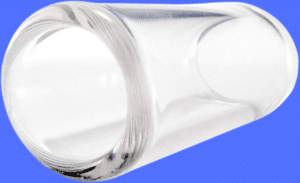
Check Price On Amazon
The Ernie Ball Glass Guitar Slide stands out due to its smoothness and the warmth it brings to your tone. Being widely recommended for beginners, this slide offers a comfortable introduction to slide playing. Its clear, rounded sound on the lower strings makes it a favorite choice for those just starting.
MagSlide’s Lightweight Option
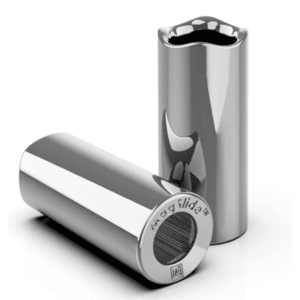
Check Price On Amazon
Consider the MagSlide Magnesium Guitar Slide MS-2 for its unique material. Magnesium offers the durability of a metal slide with a much lighter weight, easing the transition for newcomers to slide techniques.
Dunlop 222 Brass Slide for Classic Tones
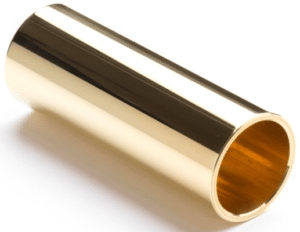
Check Price On Amazon
For those exploring the classic sounds of blues and rock, the Dunlop 222 Brass Slide provides that unmistakable bright sound. Its heft, though, can pose a challenge for beginners; however, it’s the ideal choice for those who prefer a substantial presence on the strings.
Jim Dunlop Mudslide’s Balanced Tone
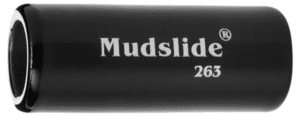
Check Price On Amazon
The Jim Dunlop Mudslide Porcelain Slide brings a distinct tonal quality that sits somewhere between glass and brass. It’s perfect for players who are looking for that sweet spot in slide tone with a more balanced weight.
Ariel Posen’s Signature Slide
Check Price On Amazon
Lastly, The Ariel Posen Signature Guitar Slide (“aged” version in the above image) takes into consideration all aspects of comfort and playability. Designed in collaboration with the renowned guitarist Ariel Posen, this slide offers a tailored fit with enhanced control over glide and expression.
It has a rounded tip for comfort and to add weight to the slide. It’s available in aged brass, polished brass, nickel-plated, and copper-plated designs.
My First Experience With a Guitar Slide
One sunny afternoon, I decided it was time to try my new guitar slide. I had been practicing basic guitar for a while, and slide guitar always seemed like magic to me. So, there I was, sitting in my room with my guitar on my lap, ready to make music like the great slide guitar players I admired.
The Slippery Slide
I slipped the shiny glass slide onto my finger, feeling a bit like a wizard about to cast a spell. But when I tried to play, it wasn’t magical at all. The slide kept slipping off my finger! It was too big, and it felt awkward. I tried to hold it in place, but it just wouldn’t stay. It was frustrating, and my dream of playing beautiful slide guitar music seemed to be slipping away, just like the slide on my finger!
Finding the Right Fit
I remembered reading that the slide should fit snugly, not too tight but not too loose, either. So, I went back to the music store and tried on different sizes. I felt a bit like Goldilocks trying out the bears’ chairs, looking for the one that was just right. Finally, I found a smaller slide that fit perfectly. It stayed on my finger without slipping, and I could move it smoothly over the strings.
Practice Makes Perfect
Back in my room, with the right-sized slide on my finger, things started to change. At first, it was still tricky. The slide would wobble, and the sounds weren’t always the ones I wanted. But I remembered what I had learned about keeping a light touch and letting the slide rest gently on the strings, not pressing down too hard. I practiced moving it slowly up and down the fretboard, listening to the sounds change.
A Little Help From My Friends
I also learned that keeping my other fingers lightly touching the strings behind the slide helped keep the notes clear and stopped unwanted noise. It was like having a team of helpers, each finger doing its part to make the music sound good.
The Magic Moment
Then, one day, it happened. I was practicing a simple tune, and suddenly, everything clicked. The slide glided smoothly, the notes sang out clear and true, and I felt like I was really playing slide guitar. It was a magical moment, and I couldn’t stop smiling. I realized that with the right tools and lots of practice, I could make the kind of music I had dreamed of.
Sharing the Joy
Excited about my progress, I decided to play for my family. I was nervous, but when I started playing, the music flowed. They were amazed at how different and beautiful the slide made the guitar sound. It was a proud moment, showing them what I had learned and how far I had come.
Lessons Learned
My journey into slide guitar taught me some important lessons. The right-sized slide makes a big difference; practice is essential, and patience pays off. It also showed me that making music is not just about hitting the right notes; it’s about expressing yourself and sharing something special with others. And that afternoon, with my guitar and my perfectly fitting slide, I felt like I was unstoppable!
Frequently Asked Questions
Here are some of the questions I get asked about guitar slides.
If your question does not appear here, please put it in the comments, and I will get right back to you with an answer.
Can I Use A Guitar Slide On Any Type Of Guitar?
Yes, you can use a guitar slide on acoustic, electric, and even bass guitars. The key is to adjust your playing technique and the guitar’s action to suit slide playing.
Do I Need Special Strings For Slide Guitar?
No, you don’t need special strings, but some players prefer heavier gauge strings for better sustain and tone when using a slide.
How Do I Know Which Finger To Put The Slide On?
Most players use the slide on their ring finger, but you can use any finger that feels comfortable and allows you to play effectively.
Can I Use A Household Item As A Guitar Slide?
Yes, many household items like glass bottles or metal tubes can be used as makeshift slides, but proper guitar slides are designed for better sound and comfort.
Do I Have To Retune My Guitar To Play Slide?
You can play slide in standard tuning, but many slide guitarists use open tunings to make it easier to play chords and melodies.
What’s The Difference Between Playing Slide On Electric Vs. Acoustic Guitars?
The main difference is in the tone and sustain; electric guitars, especially with overdrive, can offer more sustain, while acoustics provide a warmer, more natural sound.
Can I Play Normal Guitar Chords With A Slide?
Playing standard chords with a slide can be challenging due to the slide covering all strings, but you can play slide-specific chords and voicings. Open or alternate tunings will make chording with a slide much easier.
How Do I Prevent Unwanted Noise When Playing Slide?
Lightly touching the strings behind the slide with your other fingers can help mute unwanted resonance and noise.
What Is The Best Way To Practice Slide Guitar?
Start with simple melodies, focus on intonation, and gradually increase complexity as you become more comfortable with the slide’s feel and sound.
How Important Is Action Setup For Slide Guitar?
A higher action can reduce fret buzz when playing with a slide, making it easier to achieve clear, sustained notes.
Can Playing Slide Damage My Guitar’s Fretboard?
Not if done correctly; using the right touch and not pressing too hard with the slide will prevent damage to the fretboard.
Are There Any Famous Guitarists Known For Slide Playing?
Yes, guitarists like Duane Allman, Derek Trucks, and Elmore James are renowned for their mastery of slide guitar.
How Do I Choose Between A Short And Long Slide?
Short slides allow for more fretting flexibility, while long slides cover all six strings; the choice depends on your playing style and preferences.
Can I Play Slide Guitar Without A Pick?
Yes, many slide guitarists use fingerpicking to complement the fluid sound of slide guitar, offering more control over individual string dynamics.
What Are Some Common Open Tunings For Slide Guitar?
Common open tunings include Open G, Open D, and Open E, which facilitate easier chord shapes and melodies for slide playing.
How Do I Improve My Slide Guitar Intonation?
Practice playing along with a tuner or with recorded music to refine your ear and improve pitch accuracy when sliding between notes.
Can I Use Effects Pedals With Slide Guitar?
Absolutely! Effects like reverb, delay, and overdrive can enhance the expressive qualities of slide guitar playing.
What’s The Best Material For A Beginner’s Guitar Slide?
Glass or ceramic slides are often recommended for beginners due to their lighter weight and smoother sound, making them easier to handle.
Are There Exercises Specifically For Slide Guitar Technique?
Yes, there are exercises focusing on slide control, vibrato, and transitioning between notes smoothly to develop your slide guitar skills.
Is Slide Guitar Hard To Learn?
Slide guitar has its challenges, especially in mastering intonation and control, but with practice, it’s an accessible and rewarding technique to learn. The key is to get the right size guitar slide, made from a material that sounds good to you, and just take things slow.
Wrapping Up
In this guide, we talked about the best guitar slides for beginners. Picking the right slide is like finding a magic wand that makes your guitar sing in a whole new way. We learned that slides come in different stuff like glass, metal, and brass. Each one makes your guitar sound different, so you can choose what you like best.
Although the finger you put it on is up to you, we found out that not just any slide will do. It has to fit your finger just right, not too tight and not too loose. This way, you can move it easily over the strings and make cool sounds. We also talked about trying different slides to see which one feels the best. It’s like trying on shoes until you find the perfect pair.
Lastly, we learned that playing the slide guitar takes practice. At first, it might be tricky, but if you keep trying, you’ll get better and better. It’s all about having fun and making music that makes you happy. So, with the right slide in hand and a bit of practice, you’ll be making beautiful music in no time!

Here’s a great video from Rhett Shull on A Beginners Guide To Slide Guitar. Check it out!
What To Read Next ➡ What Type Of Guitar Slide Is Best? – Transform Your Sound!
Please Tell Me What You Think!
Your experiences, insights, and adventures in the world of guitar slides are a treasure trove waiting to be shared. Dive into the comments section and share your tales, tips, or even the challenges you’ve faced in [ADD INFO HERE].
- What was your first experience like when you tried playing with a guitar slide? Share your story!
- Have you found a particular material for guitar slides that you prefer? Let us know which one and why.
- Do you have any tips or tricks for beginners just starting out with slide guitar? We’d love to hear your advice.
- What’s the biggest challenge you’ve faced while learning slide guitar, and how did you overcome it?
- Which of the guitar slides mentioned in the article are you most interested in trying, or do you have a favorite that wasn’t listed? Share your thoughts with us.
- What else is on your mind?
I’m happy to answer any questions you might have!

